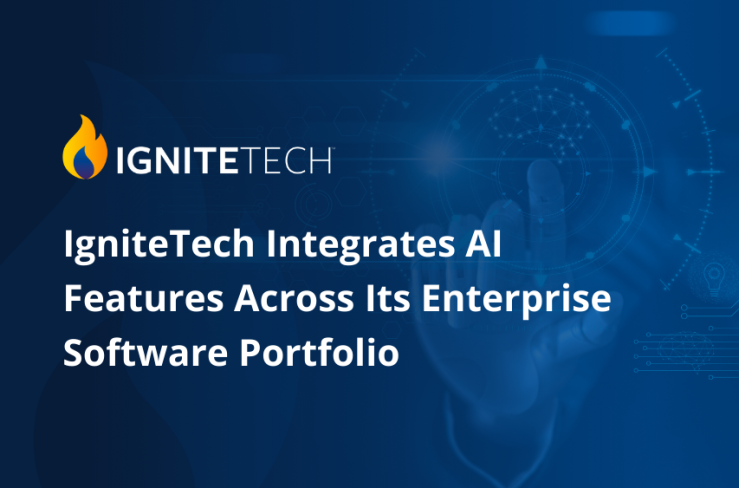Artificial intelligence (AI) has become a critical driver of business transformation, enabling organizations to optimize processes, make data-driven decisions, and unlock new growth opportunities. However, as AI investments continue to rise, measuring the return on investment (ROI) is crucial to ensure these initiatives deliver real value and justify their resources.
Measuring ROI for AI investments is not always straightforward, as the benefits can be tangible and intangible and may manifest over an extended period. This complexity often leads to a need for more clarity and confidence in AI investments, hindering organizations from fully embracing the technology's potential.
In this blog post, we'll demystify the process of measuring ROI for AI investments and provide a practical framework for quantifying the value of AI in your organization. We'll explore the key reasons for measuring ROI, outline a step-by-step approach to calculating ROI, and share best practices for ensuring your AI initiatives deliver maximum value. By the end of this post, you'll have the tools and knowledge needed to effectively measure and communicate the ROI of your AI investments, enabling you to make informed decisions and drive business success.
Why Measure ROI for AI Investments?
Measuring ROI is a critical component of any successful AI strategy. First and foremost, it allows you to justify the significant upfront investments often required for AI initiatives, including technology, talent, and infrastructure. By quantifying the value delivered by these investments, you can secure ongoing support from stakeholders and ensure the long-term viability of your AI projects.
Moreover, measuring ROI enables you to prioritize initiatives based on their performance and potential impact. Not all AI projects are created equal, and by comparing the ROI of different initiatives, you can allocate resources to those that deliver the most outstanding value to your organization. This data-driven approach to prioritization ensures that you're focusing on the most impactful projects and maximizing the return on your AI investments.
ROI data also provides valuable insights into the strengths and weaknesses of your AI initiatives, enabling you to optimize performance continuously. By monitoring and analyzing this data, you can identify areas for improvement, make informed decisions, and fine-tune your AI strategy to achieve better results. This iterative optimization approach is crucial for ensuring your AI initiatives' long-term success and scalability.
Finally, effectively communicating the ROI of your AI investments is essential for building trust and buy-in among stakeholders, including executives, employees, and customers. By demonstrating the tangible benefits of AI, you can foster a culture of innovation, secure the resources needed to scale your initiatives and position your organization as a leader in the AI space.
While measuring ROI for AI investments can be challenging, it's a critical step in ensuring the success and sustainability of your AI strategy. By understanding the importance of ROI and implementing a structured approach to measurement, you can maximize the value of your AI investments and drive long-term business success.
How to Measure ROI for AI Investments
Measuring ROI for AI investments involves a structured approach that encompasses defining objectives, identifying metrics, tracking data, and calculating ROI. Here's a step-by-step guide to help you effectively measure the ROI of your AI initiatives:
Define Clear Objectives
The first step in measuring ROI is to define clear, measurable objectives for your AI initiative. These objectives should align with your business strategy and address specific organizational challenges or opportunities. For example, your objective might be to reduce customer churn by 20% by implementing an AI-powered predictive analytics system. By setting specific, measurable goals, you establish a foundation for evaluating the success of your AI investment.
Identify Key Metrics
Once you've defined your objectives, identify the key metrics that will help you measure progress and determine the ROI of your AI initiative. These metrics should be directly tied to your goals and provide a comprehensive view of the project's performance. AI-related metrics include cost savings, revenue growth, process efficiency, and customer satisfaction. Be sure to select metrics that are relevant, measurable, and aligned with your business goals.
Track and Collect Data
With your objectives and metrics established, implement systems and processes to track and collect the necessary data throughout the AI project lifecycle. This may involve integrating AI tools with existing data sources, establishing data governance frameworks, and ensuring the accuracy and consistency of data collection. Regular data tracking is crucial for monitoring progress, identifying areas for improvement, and calculating ROI.
Calculate ROI
Finally, use the collected data to calculate the ROI of your AI investment. ROI is typically expressed as a percentage and is calculated by dividing the net benefits of the AI initiative by the total costs incurred. Net benefits include cost savings, revenue growth, and other measurable gains, while costs encompass expenses such as technology investments, personnel, and training. By calculating ROI, you can quantify the financial impact of your AI initiative and determine its overall effectiveness.
Measuring ROI for AI investments requires ongoing monitoring, analysis, and optimization. By following this structured approach and regularly evaluating the performance of your AI initiatives, you can make data-driven decisions, allocate resources effectively, and maximize the value of your AI investments.
Measuring AI ROI for Long-Term Success
Measuring ROI for AI investments requires a structured approach that involves defining clear objectives, identifying key metrics, tracking data, and calculating ROI. By following this framework, organizations can effectively quantify the value of their AI initiatives and make data-driven decisions to optimize performance and maximize returns.
Moreover, measuring ROI is essential for building trust and buy-in among stakeholders, prioritizing initiatives based on their impact, and fostering a culture of continuous improvement. By demonstrating the tangible benefits of AI, organizations can secure the support and resources needed to scale their initiatives and stay ahead of the curve in an increasingly competitive market.






